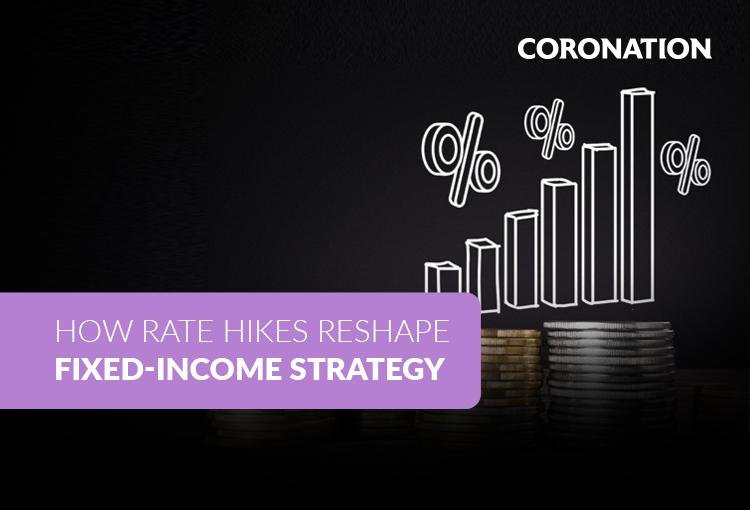
Nigeria’s economy is in a tightening phase.The Central Bank of Nigeria has raised rates several times in recent months as a response to persistent inflation, increased government borrowing and pressure on the naira.
Although there was a pause in February 2025, the broader trend remains upward. While these policy moves are designed to stabilise prices and manage excess liquidity, they also have clear consequences for investors, especially those focused on fixed-income instruments.
In this piece, the impact of interest rates on fixed-income instruments is discussed to give investors the necessary context for prudent portfolio decisions.
What is the Relationship between Interest Rates and Fixed Income?
Interest rates are among the most consequential variables in fixed-income investing. When they rise, their effects are immediately felt across fixed income products, fund valuations, and reinvestment strategies. A clear understanding of this relationship is important for investors managing fixed-income portfolios.
The Interest Rate–Bond Price Relationship
One of the most noticeable trends in fixed-income investing is this: when interest rates go up, bond prices usually go down. Why is this the case?
A bond is basically a loan. When you buy one, you are lending money to a company or the government, and they agree to pay you interest, typically semi-annually. This interest is called a coupon. Suppose you buy a bond for ₦1,000,000 with a 10% coupon and a 5-year maturity. This means:
You receive ₦50,000 semi-annually for 5 years (10% of ₦1,000,000 annually).
Over 5 years, that adds up to ₦500,000 in interest payments.
At the end of the 5th year, you also get back your original ₦1,000,000.
So, in total, you will have received ₦1,500,000: ₦1,000,000 in principal (your initial capital) + ₦500,000 in interest income.
This structure, steady income plus eventual return of your capital, is what makes bonds attractive to many investors, especially when they want predictable cash flows.
Now, here is the important part: if new bonds in the market are now offering higher coupons, say, 14% instead of 10%, investors will prefer those. Your older bond, which pays just 10%, will no longer seem like a good deal.
Meaning that, if you would like to sell your bond before it matures, you would have to sell at a discounted price to attract buyers. That way, even though your bond pays less each year, the discounted price means the buyer receives a larger volume of the bond and still gets a return (or yield) that is close to the new market rate.
This is why bond prices fall when interest rates rise, so as to remain competitive with newer bonds that pay more interest.
Instrument-Specific Effects
The degree of sensitivity to interest rate changes depends on the structure of the fixed-income instrument:
Coupon-Bearing Bonds: These pay interest at regular intervals and return the principal at maturity. When interest rates rise, the market prices of these bonds typically fall. This effect is more pronounced for bonds with longer tenors because their fixed interest payments become less attractive than new bonds offering higher yields.
Zero-Coupon Bonds: These do not pay periodic interest but are issued at a discount and redeemed at face value. Because all cash flows occur at maturity, their prices are particularly sensitive to rate movements. Rising rates reduce the present value of the future payoff and lead to sharper declines in market price.
Fixed-Income Funds: These pooled vehicles hold a mix of bonds and money market instruments. In periods of rising rates, the value of existing holdings may decline due to mark-to-market valuation.
What is mark-to-market valuation?
The phrase “mark-to-market” comes from the idea of marking (or recording) the value of something based on the market price today.
Say you own a table; you bought it for ₦50,000 last year. But today, someone offers to buy it from you for ₦35,000. If you want to show how much your table is worth right now, you do not write down ₦50,000 anymore. You “mark it to the market,” meaning that you update the value to reflect what someone is actually willing to pay today: ₦35,000.
This idea can be applied to fixed-income funds, which are pools of money invested in fixed-income securities and money market instruments. When interest rates rise, the price of many of those securities falls. Instead of waiting until the bond matures to see what it is worth, fund managers have to report what the bonds could be sold for right now, that is, today’s market value. This is what mark-to-market means.
So even if the fund is still collecting coupon payments on those bonds (say, ₦100,000 a year), the overall value of the fund might temporarily drop because those bonds would sell for less in the current market. This drop shows up in what is called the fund’s Net Asset Value (NAV), which basically is the fund’s current worth per unit.
The benefit of mark-to-market valuation is that it helps keep things transparent for investors, so they are able to make informed decisions.
How Should Investors Respond?
Interest rates and fixed-income investments move in opposite directions. When interest rates rise, the prices of existing fixed-income securities fall. This dynamic is central to how investors manage fixed-income portfolios, especially in an environment like Nigeria’s, where inflationary pressure and monetary policy changes can shift quickly.
Now, how may investors adjust their strategy?
- When Rates Are Rising, Shorter Tenors Become More Attractive
The first principle to keep in mind is that fixed-income securities with shorter maturities tend to be less affected by interest rate increases. This is because their prices do not have to adjust as much to remain attractive, as investors will soon have a chance to reinvest at newer, higher rates.
Consider this scenario, you have two bonds to choose from:
Bond A: A 2-year tenor with a 12% annual coupon
Bond B: A 10-year tenor with the same 12% coupon
Now, imagine that interest rates in the market rise to 14%.
Bond A may lose a little value. Say, it now trades at ₦980,000 instead of ₦1,000,000. But Bond B, with its longer tenor, might see its price drop more sharply, perhaps to ₦920,000.
This difference matters. If you are an individual investor who might need to sell before maturity, Bond A protects you better from price swings. Even if you plan to hold until maturity, shorter-term instruments give you more flexibility to reinvest at higher rates as they mature.
- Stay the Course, because Income Matters as Much as Price
It is easy to panic when bond or fund values drop on paper. But for many investors, the primary benefit of fixed income is the steady stream of interest payments. Unless you plan to sell early, the headline price movements do not change the income you’ll receive.
Example:
You purchase a corporate bond for ₦1,000,000 with a 13% coupon and a 5-year maturity.
Each year, you receive ₦130,000,
Over 5 years: You collect ₦650,000,
At the end: You get back your full ₦1,000,000
Even if market interest rates rise and your bond’s resale value temporarily drops to ₦950,000, your actual earnings remain the same as long as you hold the bond to maturity.
What is the lesson here? Do not confuse price volatility with real losses. What matters is your ability to stay invested and keep collecting income.
- Use a Laddered Approach to Diversify Exposure
Rather than locking all your capital into one bond or fund, consider spreading your investments across instruments with different maturities. This strategy, commonly called “laddering”, allows you to benefit from both existing yields and upcoming rate adjustments.
Take, for instance, a situation where an investor might divide ₦1,000,000 as follows:
₦400,000 in a 91-day treasury bill at 10 per cent
₦300,000 in a 1-year corporate note at 12 per cent
₦300,000 in a 3-year bond at 13.5 per cent
As the shorter-tenor instruments mature, you can reinvest them at the new prevailing rates, potentially improving overall returns. At the same time, you are still collecting coupons on the longer-term portion. This approach gives you a balance between flexibility and stability.
Why Coronation’s Fixed Income Funds Are the Best Solution
When markets are unpredictable, going at it alone can feel like driving through fog without headlights. For many individual investors, adjusting a fixed-income strategy in response to interest rate changes is easier said than done. Rebalancing, laddering, and watching for duration risk all demand time, market insight, disciplined execution, and large trading capital.
This is when the value of professionally managed funds like the Coronation Fixed Income Fund and the Coronation Premium Fixed Income Fund becomes clear.
Instead of reacting to each rate hike or shuffling your portfolio to stay competitive, you benefit from an expert team whose job it is to do that for you. A good Fixed Income Fund is actively managed to adapt to changing rate environments and seeks to balance income generation with capital preservation.
At Coronation, our Fixed Income Fund and Premium Fixed Income Fund are structured for exactly this purpose.
They are: Actively managed by seasoned professionals who monitor market movements, monetary policy shifts, and interest rate expectations.
Diversified across high-quality instruments to reduce concentration risk.
Suitable for rising-rate cycles, with strategic reallocation into shorter-tenor instruments when appropriate.
For expertly managed fixed-income funds and tailored investment support, contact us today via email at sales@coronationam.com or call Ifeanyichukwu – +234 806 475 8729;
Oluwatobi – +234 906 110 8598. To get started right away, download the Coronation Wealth app here: https://coronationwealth.ng





